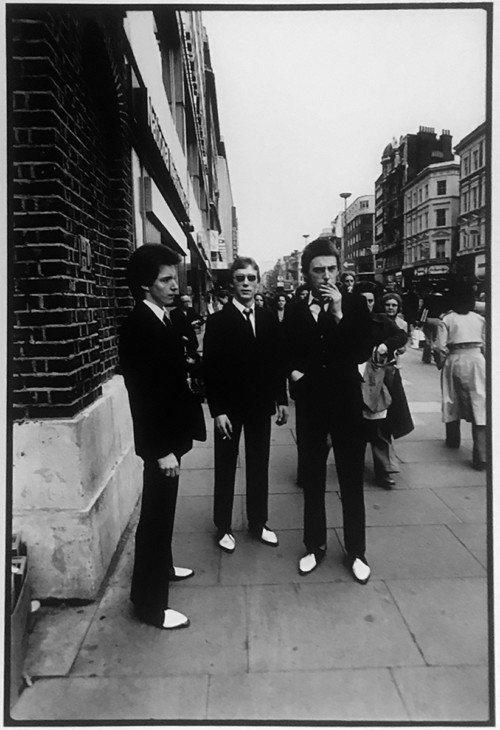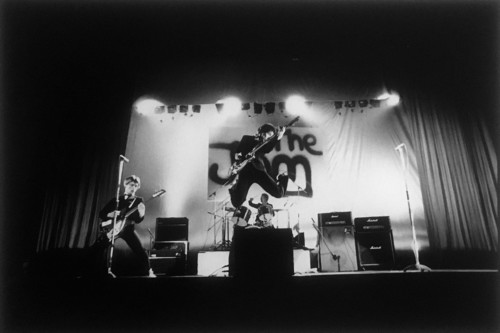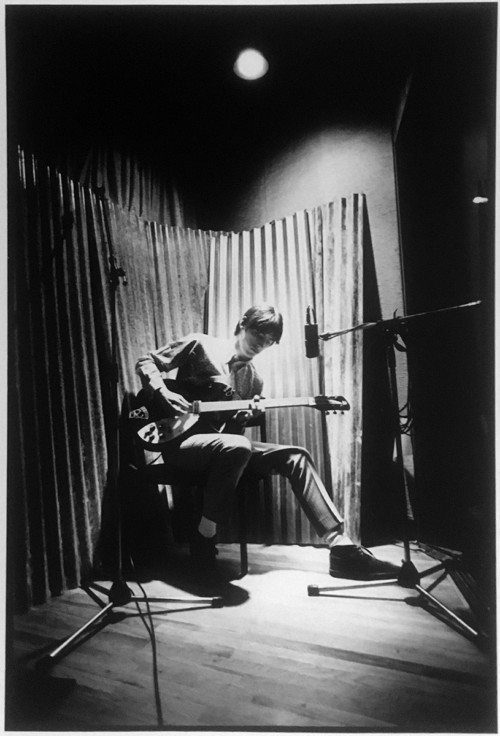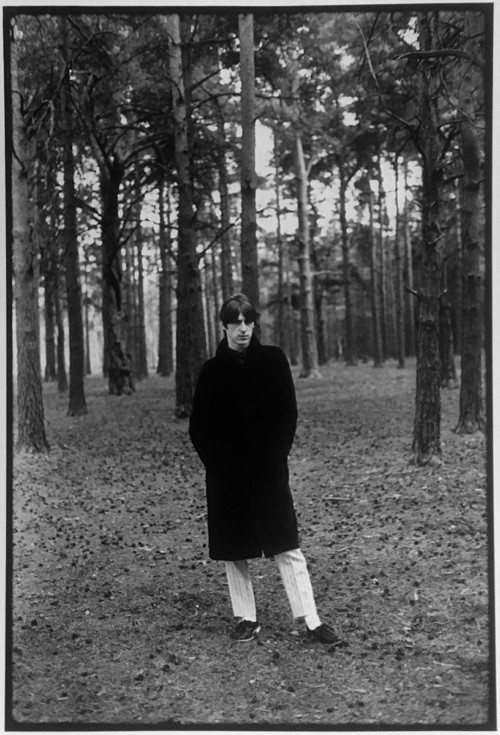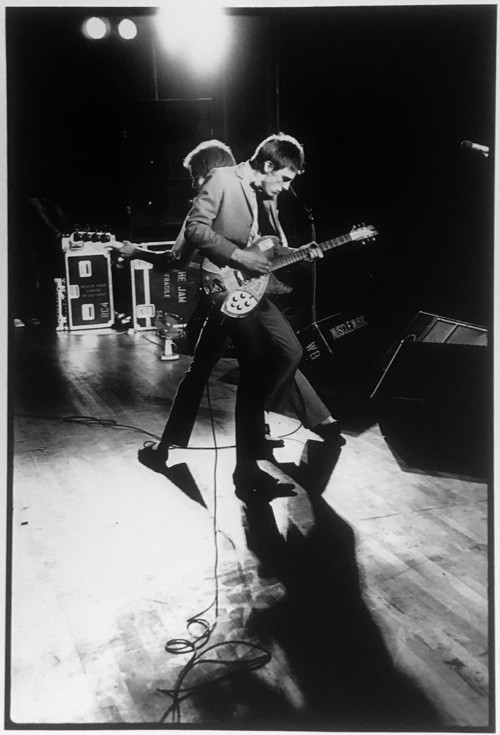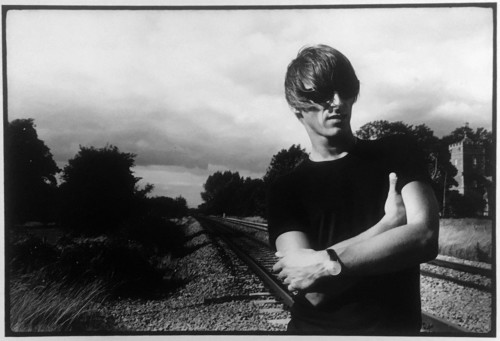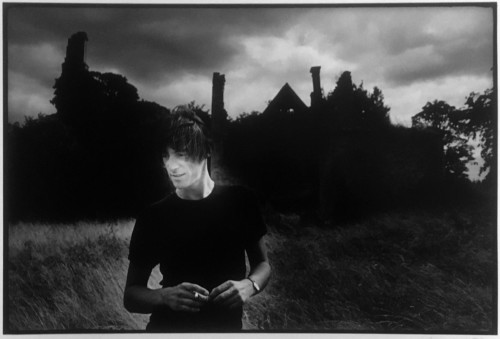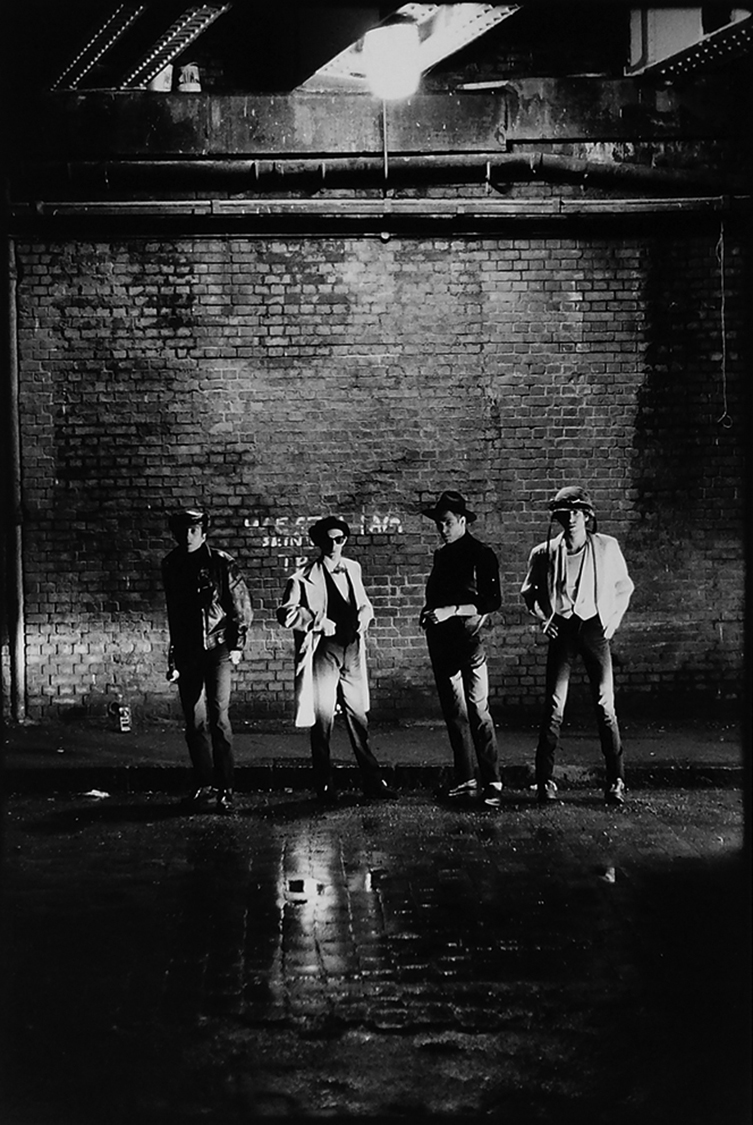Pennie Smith made one of the the most famous photographs in the history of rock ‘n’ roll – the cover image for London Calling by The Clash
-
Early days—1977—and Pennie Smith captures The Jam in matching black suits, white shirts, black ties and black & white shoes. Three aliens from another time and place, dropped into a London street scene. Life goes on oblivious in the background, but something is starting….. and as a wise man once said: the kids want some action. Who can f****** blame them ? This silver gelatin photograph is made in the darkroom from Pennie Smith's original negative on 16 x 20 inch paper, and signed on the front under the image area by Pennie Smith. The image size is 11 x 16 inches approx. The price is shown for an unframed photograph - please ask if you require framing.
-
The Jam by Pennie Smith As a photographer you have to be in the right place at the right time. Then you need that blend of skill and luck. The result is this perfect composition. Paul Weller leans back and launches into one on his Rickenbacker. Bruce Foxton leaps so high that he reveals Rick Buckler on drums in the background. The best bit - look at how Bruce's legs form into a perfect 'A', synching with the logo behind. This is a silver gelatin photograph made in the darkroom from the original negative on 16 x 20 inch paper, and signed on the front under the image area by Pennie Smith. The image size is 11 x 16 inches approx. The price is shown for an unframed photograph - please ask if you require framing.
-
What a treat to be able to offer Pennie Smith's photographs to our clients. I love this 1980 photograph of Paul Weller taken at The Town House studios, during the recording of my favourite Jam album, Sounds Affects. It plays a nice visual trick on the viewer. If you start at the top you would be forgiven for thinking that the moon is shining down on an outdoor scene—and the corrugated sheets in the background seem to confirm that thought. Then, once you see the floorboards and microphones you realise your first impressions were wrong. This silver gelatin photograph is made in the darkroom from Pennie Smith's original negative on 16 x 20 inch paper, and signed on the front under the image area by Pennie Smith. The image size is 11 x 16 inches approx. The price is shown for an unframed photograph - please ask if you require framing.
-
Paul Weller in cream trousers and corduroy overcoat photographed by Pennie Smith at the video shoot for “Funeral Pyre”. The filming took place at Horsell Common, near Woking in 1981. This silver gelatin photograph is made in the darkroom from Pennie Smith's original negative on 16 x 20 inch paper, and signed on the front under the image area by Pennie Smith. The image size is 11 x 16 inches approx. The price is shown for an unframed photograph - please ask if you require framing.
-
I read somewhere that this is Paul Weller’s favourite photograph of The Jam. Maybe that’s because it is just him and Bruce — or maybe it is because it is a truly great image. We call it “tripod” because Bruce and Paul seem to have fused into a rock-solid three-legged entity. One thing you may not notice at first - see how the shadows form edgy geometric shapes on the floor. Taken in 1978, this photograph appeared on the front cover of NME on 4 November of that year, under the headline “Jam today”. This silver gelatin photograph is made in the darkroom from Pennie Smith's original negative on 16 x 20 inch paper, and signed on the front under the image area by Pennie Smith. The image size is 11 x 16 inches approx. The price is shown for an unframed photograph - please ask if you require framing.
-
Paul Weller photographed behind Manor Studios, Oxford in 1995 by Pennie Smith. This silver gelatin photograph is made in the darkroom from Pennie Smith's original negative on 16 x 20 inch paper, and signed on the front under the image area by Pennie Smith. The image size is 11 x 16 inches approx. The price is shown for an unframed photograph - please ask if you require framing.
-
A dramatic portrait of Paul Weller by Pennie Smith, taken close to The Manor Studios, near Oxford, in 1995. Achieving the balance between the light on Paul's face and the dark outline of the ruins behind requires the supreme skill of a master black and white hand-printer. This silver gelatin photograph is made in the darkroom from Pennie Smith's original negative on 16 x 20 inch paper, and signed on the front under the image area by Pennie Smith. The image size is 11 x 16 inches approx. The price is shown for an unframed photograph - please ask if you require framing.
-
The Sandinista! LP cover photograph (1980) An archivally processed silver gelatin photograph made by hand in the darkroom from Pennie Smith's original negative on 16x20 inch paper, signed on the front under the image area by Pennie Smith. On this original photograph you can see the West Ham graffiti that was removed from the actual Sandinista! LP cover artwork. Pennie Smith photographed the group behind Kings Cross/ St Pancras Station in London. The group had recently finished shooting a video for 'The Call Up', and Mick Jones is still wearing the helmet he wore for the filming.
-
Out of stockNOTE ON TIMING - WE ARE CURRENTLY OUT OF STOCK - NEW STOCK EXPECTED END OF APRIL/EARLY MAY 2025 Archival silver gelatin photograph made by hand in the darkroom from the original negative on 16 x 20 inch (40x50cm) paper, signed by Pennie Smith on the front under the image. Price is shown for an unframed photograph excluding VAT. The classic London Calling album cover photograph. It is one of the most famous photographs in the history of rock ‘n’ roll. It is not cheap, but sometimes the good stuff has to hurt a little. The photograph shows Paul Simonon about to smash up his bass during a show at The Palladium, New York City on 21 September 1979. It is an acclaimed shot, receiving the ultimate accolade from Q Magazine by being voted the best rock and roll photograph of all time. Pennie had accompanied The Clash throughout their 1979 US tour, and very nearly didn’t attend this particular concert. In the end she chose to turn down the offer to go out with friends and ended up stage right at The Palladium. The band were used to getting a big response from their US audiences, but not on this night – The Palladium had fixed seating. Paul’s frustration turned to anger, and then he lost it completely. His watch stopped at 9.50pm.

